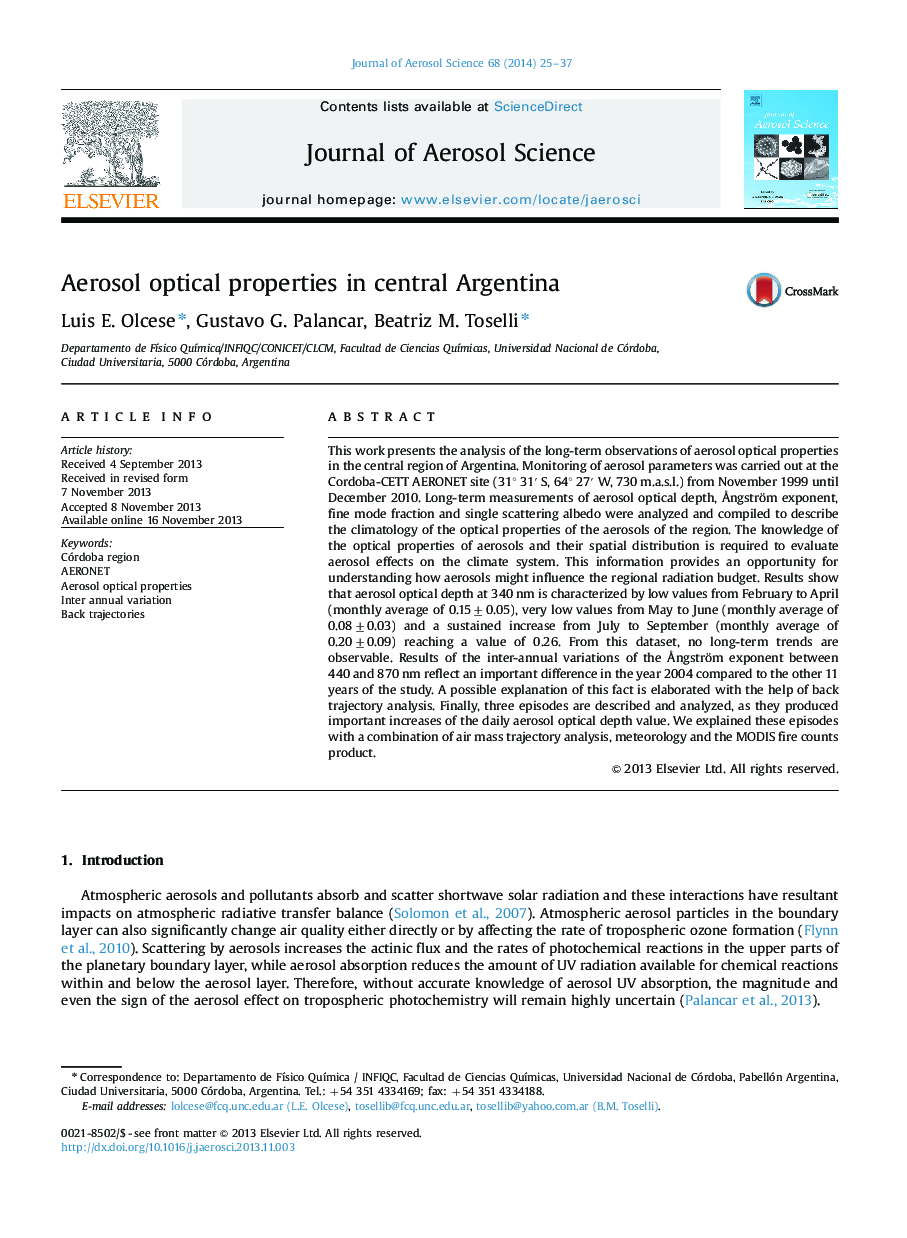| Article ID | Journal | Published Year | Pages | File Type |
|---|---|---|---|---|
| 4452420 | Journal of Aerosol Science | 2014 | 13 Pages |
•The aerosol climatology of the Córdoba region has been comprehensively described.•Meteorology plays a key role on the total aerosol load and properties.•The optical properties of aerosols are drastically modified during episodes.•There are no trends in the optical properties values in the period of 1999–2010.
This work presents the analysis of the long-term observations of aerosol optical properties in the central region of Argentina. Monitoring of aerosol parameters was carried out at the Cordoba-CETT AERONET site (31° 31′ S, 64° 27′ W, 730 m.a.s.l.) from November 1999 until December 2010. Long-term measurements of aerosol optical depth, Ångström exponent, fine mode fraction and single scattering albedo were analyzed and compiled to describe the climatology of the optical properties of the aerosols of the region. The knowledge of the optical properties of aerosols and their spatial distribution is required to evaluate aerosol effects on the climate system. This information provides an opportunity for understanding how aerosols might influence the regional radiation budget. Results show that aerosol optical depth at 340 nm is characterized by low values from February to April (monthly average of 0.15±0.05), very low values from May to June (monthly average of 0.08±0.03) and a sustained increase from July to September (monthly average of 0.20±0.09) reaching a value of 0.26. From this dataset, no long-term trends are observable. Results of the inter-annual variations of the Ångström exponent between 440 and 870 nm reflect an important difference in the year 2004 compared to the other 11 years of the study. A possible explanation of this fact is elaborated with the help of back trajectory analysis. Finally, three episodes are described and analyzed, as they produced important increases of the daily aerosol optical depth value. We explained these episodes with a combination of air mass trajectory analysis, meteorology and the MODIS fire counts product.
